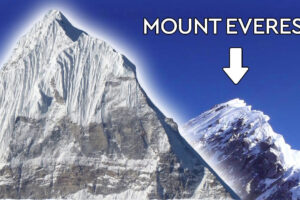Introduction
Have you ever wondered what the biggest feature on Earth is? There are many different features that make our planet unique, from towering mountains to vast oceans, but which one stands out as the largest? In this article, we’ll explore the answer to this question and take a closer look at the biggest feature on Earth.
1: The Earth’s Diameter
The biggest feature on Earth is its diameter, which measures approximately 12,742 kilometers (7,918 miles) at the equator. This makes our planet the fifth-largest in the solar system, surpassed only by Jupiter, Saturn, Uranus, and Neptune.
2: The Pacific Ocean
However, if we’re talking about surface features, the largest one is the Pacific Ocean, which covers an area of approximately 63.8 million square miles. The Pacific Ocean is also the deepest ocean in the world, with a maximum depth of around 36,000 feet.
3: The Himalayas
Another contender for the title of the biggest feature on Earth is the Himalayas mountain range, which stretches across several countries in Asia and has a length of approximately 1,500 miles. The Himalayas also contain the highest peak on Earth, Mount Everest, which stands at 29,029 feet tall.
4: The Amazon Rainforest
The Amazon Rainforest is another candidate for the title of the biggest feature on Earth. It covers an area of approximately 2.1 million square miles and is home to countless species of plants and animals, many of which are found nowhere else on Earth.
5: The Sahara Desert
The Sahara Desert is the largest hot desert in the world, covering an area of approximately 3.6 million square miles. It’s also one of the hottest places on Earth, with temperatures regularly exceeding 122 degrees Fahrenheit.
6: The Great Barrier Reef
The Great Barrier Reef is the largest coral reef system in the world, stretching over 1,400 miles along the coast of Australia. It’s home to a diverse array of marine life, including over 1,500 species of fish and 600 species of coral.
7: The Gulf of Mexico
The Gulf of Mexico is another contender for the title of the biggest feature on Earth. It covers an area of approximately 600,000 square miles and is home to a variety of marine life, including whales, dolphins, and sea turtles.
8: The Antarctic Ice Sheet
The Antarctic Ice Sheet is the largest ice sheet in the world, covering an area of approximately 5.4 million square miles. It contains around 90% of the world’s ice and is up to 2.5 miles thick in some places.
9: The Atmosphere
Finally, we can’t forget about the Earth’s atmosphere, which is the biggest feature in terms of volume. It extends over 6,200 miles above the Earth’s surface and is composed of several layers, each with its own unique characteristics.
Conclusion
In conclusion, the biggest feature on Earth depends on how we define “biggest.” If we’re talking about the planet’s diameter, that title goes to the Earth itself. However, if we’re talking about surface features, the Pacific Ocean takes the crown, closely followed by the Himalayas, the Amazon Rainforest, and the Sahara Desert. The Great Barrier Reef and the Gulf of Mexico are also worth mentioning, as is the Antarctic Ice Sheet, which is the largest ice sheet in the world. Finally, we can’t forget about the Earth’s atmosphere, which is the biggest feature in terms of volume.






